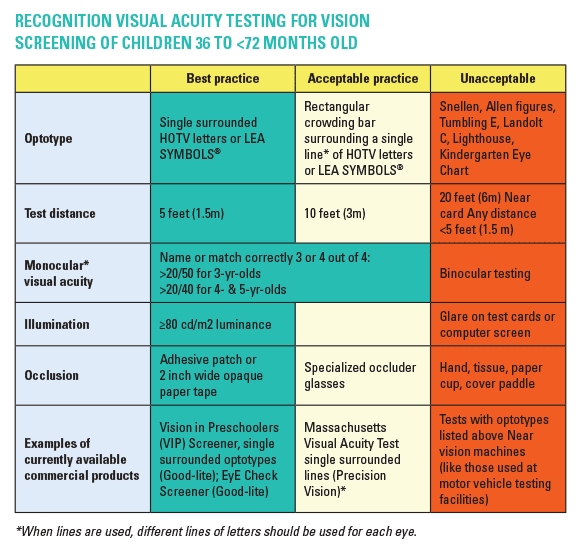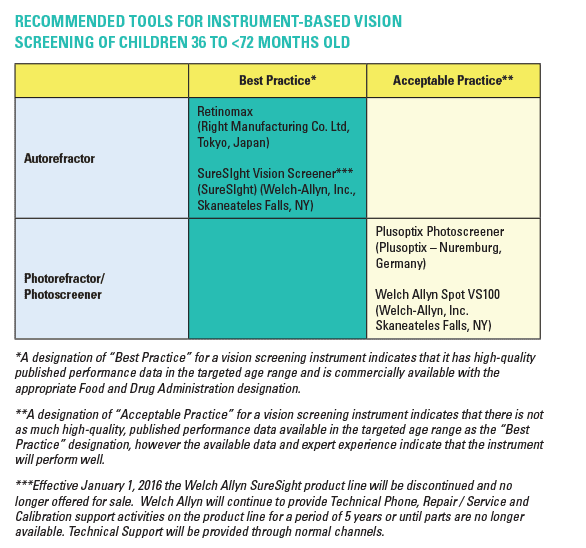Vision Screening for Children 36 to <72 Months: Recommended Practices
Tests of Recognition Visual Acuity
The most commonly measured type of visual acuity, recognition visual acuity, is defined as the ability to discern certain optotypes (letters, numbers, or figures) at a specified distance. Following are characteristics of tests of recognition visual acuity that are based on recommendations from the National Expert Panel. Tests of recognition visual acuity whose design meets best practice (preferred) or acceptable practice recommendations should be used for screening vision in the targeted age range. Anyone using tests based on “unacceptable” characteristics should move toward using tools based on best practices as soon as possible.

Instrument-based vision screening: Instrument-based screening refers to vision screening using automated technology. Instrument-based screening using autorefraction or photorefraction/photoscreening identifies the presence and size of refractive error rather than providing a measurement of visual acuity. Each of these screening devices requires instrument- and age-specific pass/fail refractive error criteria to be programmed into it. Autorefractors are computerized instruments that use optically automated wave-front technology to provide a numerical estimate of refractive error. Photorefraction or photoscreening devices use optical images of the eyes’ red reflexes to provide a simultaneous, binocular estimate of refractive error. In addition, some instruments have the capability to evaluate ocular alignment and identify media opacities (such as a cataract.) The instruments listed below under “Best Practice” have high-quality published performance data in the targeted age range and are commercially available with the appropriate Food and Drug Administration designation.
Autorefractor and photoscreening technologies continue to evolve rapidly; recommendations for best practice will change with the availability of additional quality peer-reviewed data and as the natural history of refractive error and the role of risk factors for the development of amblyopia and strabismus will become clearer. Updated information will be maintained on this website.

Stereoacuity Testing
In instances when stereoacuity testing is required or desired for screening preschool children, the Stereo Smile II test, which is commercially available as the PASS (Preschool Assessment of Stereopsis with a Smile) test (Vision Assessment Corporation, Elk Grove Village, IL), should be used because it performs better than other commercially available tests of stereoacuity in this age group.


